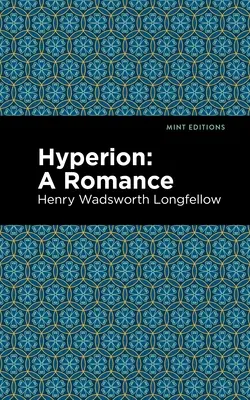Hyperion: A Romance (1839) is a novel by Henry Wadsworth Longfellow.
Although he is known predominately as one of the leading American poets
of the nineteenth century, Longfellow began his career writing
moderately successful travelogues, stories, and novels. Inspired by his
travels throughout Europe, as well as by the death of his first wife,
Longfellow published Hyperion: A Romance to lukewarm critical
response. Although less significant than his lyric and epic poetry,
Hyperion captures an artist coming into his own within a Romantic
tradition flooded with major and minor figures across the globe.
Modeled partly on Goethe's Wilhelm Meister's Lehrjahre (1796),
Hyperion: A Romance is the story of Paul Flemming, a young academic
who travels to Germany following the loss of a close friend. Taking in
the sights, sounds, folk tales, and music of the countryside, towns, and
villages he visits, Flemming muses on the position of humanity in the
world and the meaning of art in relation to nature. Filled with such
lofty thoughts, he is entirely unprepared to meet and fall in love with
a German woman. At a moment of growth and on the brink of reconciling
with his trauma, Flemming attempts to offer himself to another only to
find that life has a strange way of reflecting the mind of the artist.
Hyperion: A Romance is a fascinating blend of travel narrative,
philosophy, and bildungsroman from a writer with a poet's sense of the
world.
With a beautifully designed cover and professionally typeset manuscript,
this edition of Henry Wadsworth Longfellow's Hyperion: A Romance is a
classic of American literature reimagined for modern readers.


